Following the Birdsong
Inclusive birding for the visually impaired in Colombia
A chestnut-capped Brush Finch in nature. / USAID/Colombia Natural Wealth
For years, sound designer and accessibility consultant Juan Pablo Culasso’s soundscape recordings have provided audiences with natural-world auditory experiences of places they may never see.
His recent work with USAID’s Natural Wealth Program in Colombia took accessibility to a new level, combining innovation and inclusiveness to create a guided sound birding experience for the visually impaired.
Birding by Ear
Birding, whether visual or auditory, is a great way to experience the natural world and protect biodiversity. The sensory experience of birding by sound is a boost to disability inclusion, too.
Identifying birds by calls or songs rather than sight is called blind birding, though it is not only for the visually impaired. It can be a challenging skill to hone as many birds have similar songs, and others can mimic the sounds of other species.
Identifying birds through sound requires being attentive to the unique sounds and calls of birds. Juan Pablo, who was born blind, can reportedly identify more than 2,000 birds by their song. That’s pretty impressive considering Colombia is home to the largest number of bird species in the world.
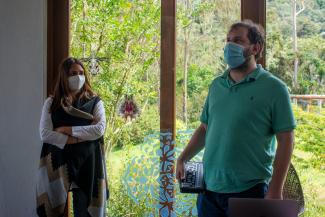
Juan Pablo, right, is helping build an inclusive experience for birders and other nature lovers in Colombia. He can identify at least 2,000 birds by their songs alone.
USAID/Colombia Natural Wealth
Accessible Nature Tourism
Colombia’s rich and diverse natural landscapes are not exactly accessible to persons with disabilities, including the visually impaired. However, by creatively leveraging a tenet of bird watching — the power of listening — the beloved recreational activity just got more inclusive.
With the support of USAID, Juan Pablo and local conservation organization Asociación Río Cali, established the first birdwatching trail for people with disabilities in South America in 2020. The short trail is located in a natural private reserve close to the southwestern city of Cali. The surrounding cloud forest, an endangered ecosystem, is benefitting from ecotourism, too.
The trail includes a guide with audio recordings of 27 bird species found in the reserve, an interactive tool with information on the diversity of bird species, and a test of birding-by-ear skills.
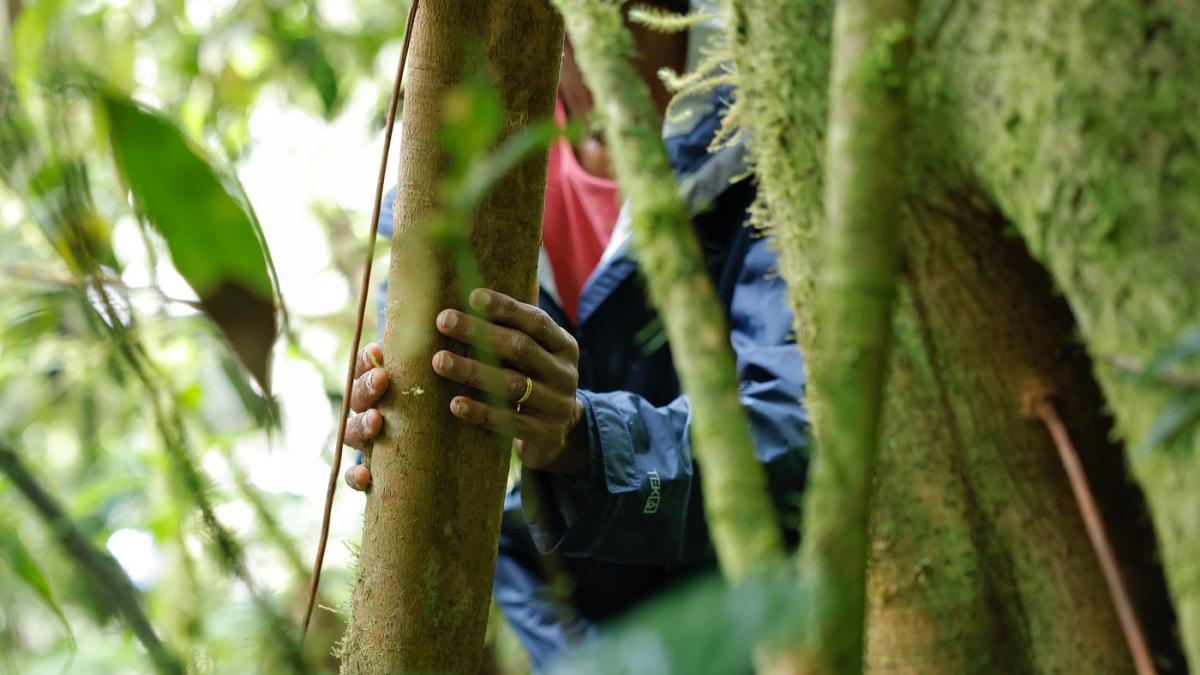
Eneido Fuentes, who heads the Indigenous association Asociacion Mataven Deiyu in the Vichada Department, explains that “the rainforest is alive. This is why nature is heard. It makes sounds. It lives and it is felt.”
USAID/Colombia Natural Wealth
Many people, visually impaired or not, who have listened to the audio birding guide note how the sounds deeply connected them to the natural world around them.
In addition to recording soundscapes and adapting trails, Juan Pablo said his goal was to “strengthen the capacity of [the tourism sector] to accommodate persons with disabilities.”
USAID shares Juan Pablo’s goal to create a more inclusive ecotourism sector in Colombia. In fact, this goal extends to all conservation work in the country. USAID recognizes that building inclusion and accessibility across its Natural Wealth Program in Colombia is an opportunity to allow diverse populations to experience the tranquility of nature and to inspire environmental conservation.
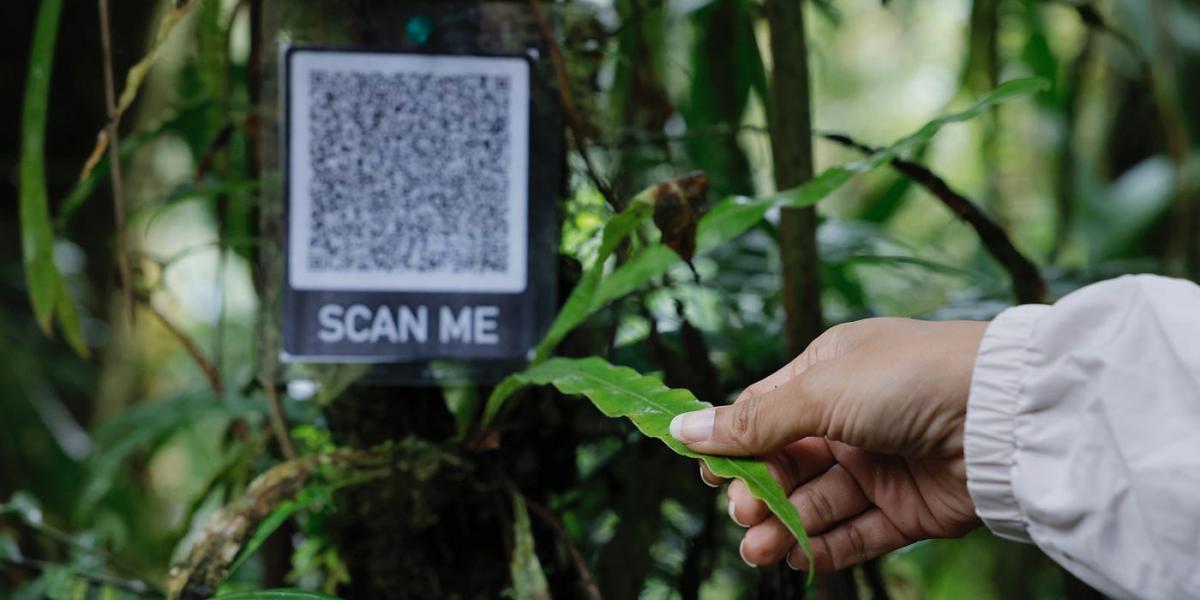
The inclusive birding trail also includes interactive features like this QR code.
USAID/Colombia Natural Wealth
To help achieve inclusion and conservation goals, USAID and Juan Pablo worked together to provide ecotourism professionals with training on how to guide people with visual disabilities.
USAID shares Juan Pablo’s goal to create a more inclusive ecotourism sector in Colombia. In fact, this goal extends to all conservation work in the country. USAID recognizes that building inclusion and accessibility across its Natural Wealth Program in Colombia is an opportunity to allow diverse populations to experience the tranquility of nature and to inspire environmental conservation.
To help achieve inclusion and conservation goals, USAID and Juan Pablo worked together to provide ecotourism professionals with training on how to guide people with visual disabilities. At the workshops, Juan Pablo shared his experience as a blind birder, and he showed participants how to incorporate accessible features such as QR codes and guide strings when designing birding trails.
“I attempted to create an experience for the participants by putting themselves in the shoes of a blind person,” he explains. “How does one detect different objects as if they were a blind person? Which trees can be touched? Which flowers can be smelled?”
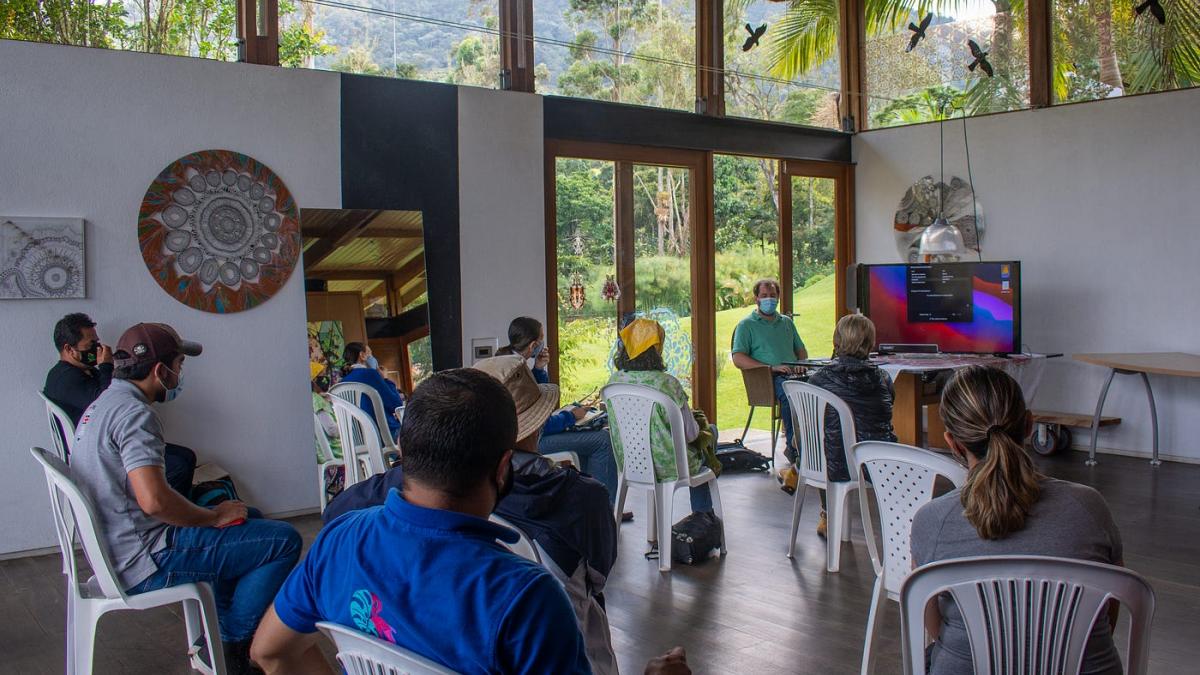
A group of people in one of Juan Pablo’s workshops about the birdwatching trail.
USAID/Colombia Natural Wealth
Juan Pablo hopes that perspective will help people working in ecotourism to create truly inclusive, accessible experiences.
Tourism guide and program participant Luz Amparo Duarte said: “When we include people with disabilities in tourism, it helps us feel more confident in what we’re doing, and we will share the nature and the biodiversity that we have with a different audience.”
“This will be a new and better direction for nature tourism,” she added.”
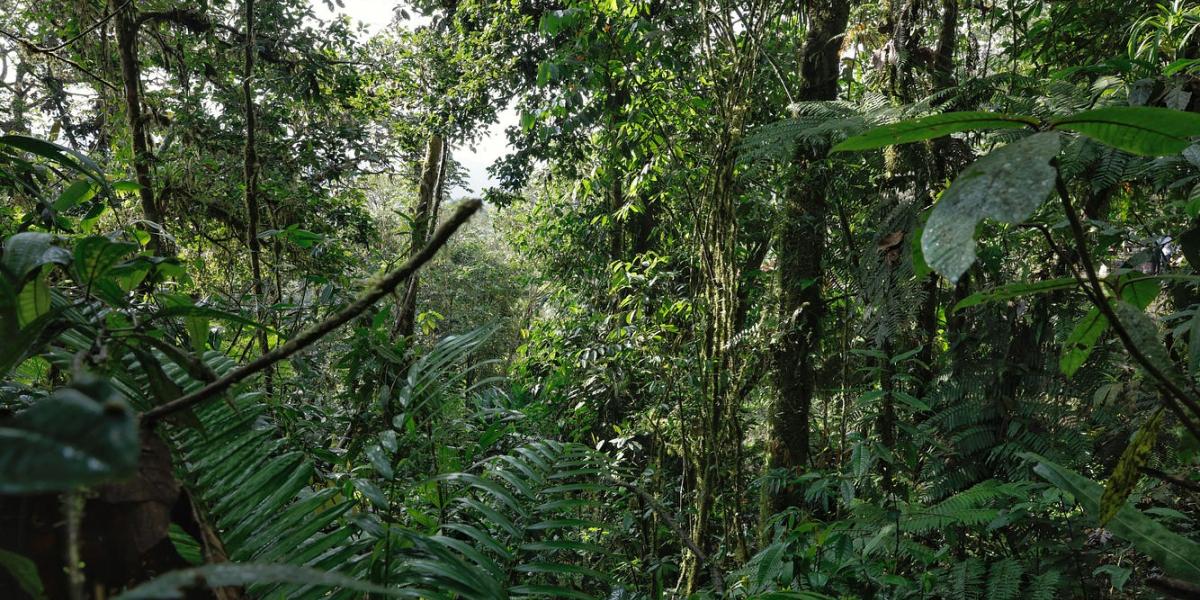
With the support of USAID, the first bird watching trail for people with disabilities was established in South America.
USAID/Colombia Natural Wealth
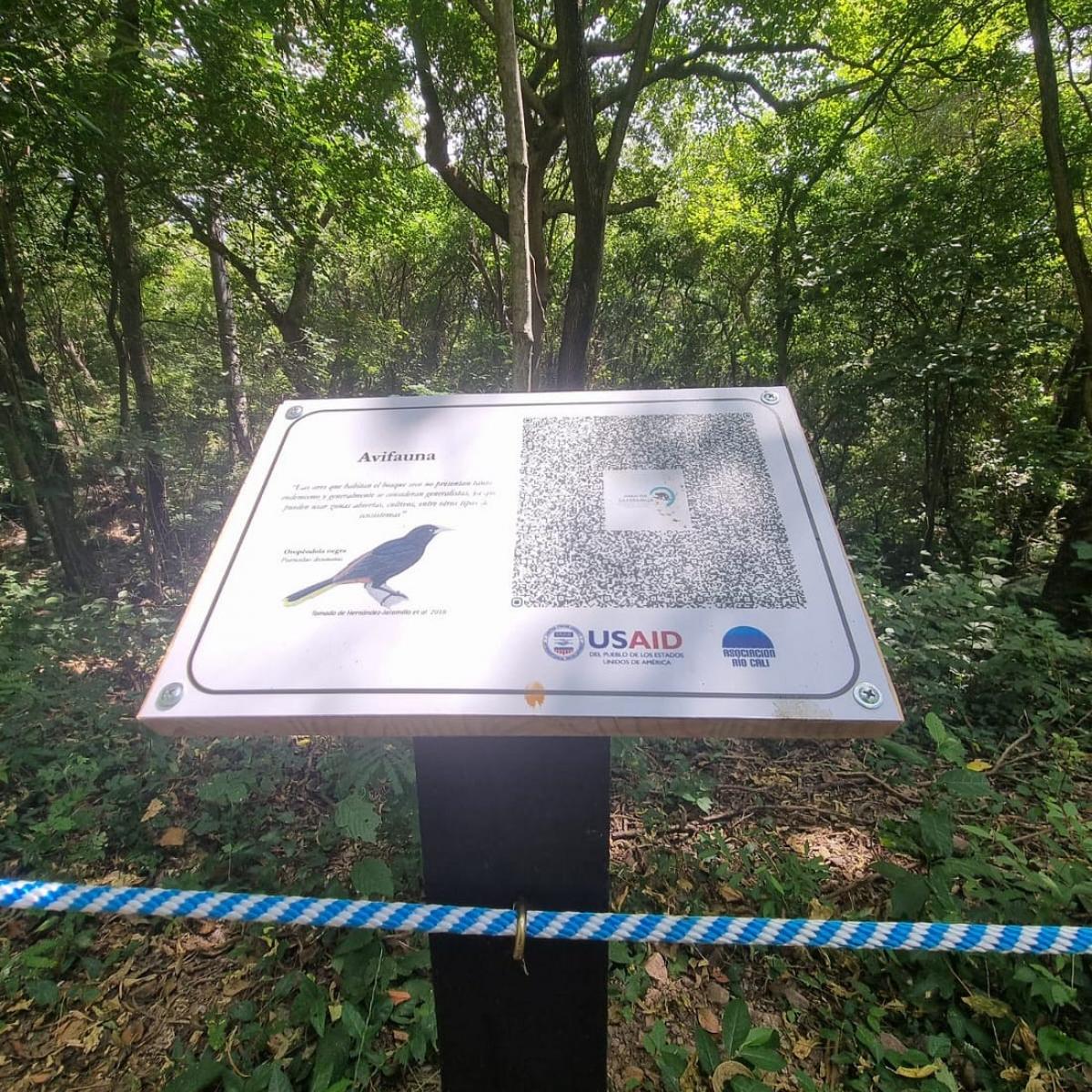
A sign along the first bird watching trail for people with disabilities established in South America. The trail is located in a natural private reserve close to the southwestern city of Cali, Colombia.
USAID/Colombia Natural Wealth
Soundscapes Across Colombia
The birding-by-sound trail has been so successful that other parts of Colombia have replicated it.
Juan Pablo helped create four inclusive birding trails or soundscapes in private nature reserves and indigenous territories in the Amazon’s Mataven-Vichada jungle, the flooded savannas in Casanare, and the dry forest in Cesar.
Developments like that have helped make Colombia one of the fastest growing tourist destinations in the world. The tourism sector contributes over 2% to the country’s GDP annually.
Incentivized by income opportunities offered by ecotourism, some neighboring landowners have registered their property as a private nature reserve.
Eneido Fuentes, who heads the Indigenous association Asociacion Mataven Deiyu in the Vichada Department, said this effort “motivates us that the rainforest is alive. This is why nature is heard. It makes sounds. It lives and it is felt.”
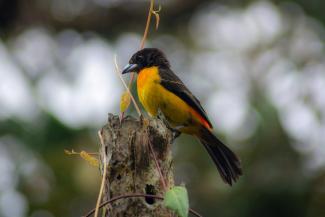
Rhampocelus flammigerus, also know as the flame-rumped tanager. Millions of people around the world enjoy birdwatching for recreation, and the U.S. National Institutes of Health says it “is considered one of the fastest growing nature-based tourism sectors in the world.”
USAID/Colombia Natural Wealth
About the Author
USAID’s Natural Wealth Program in Colombia works with the Government of Colombia to preserve biodiversity of tropical forests in Caribbean coastal areas and in the grasslands and freshwater ecosystems in the Orinoquia region.

